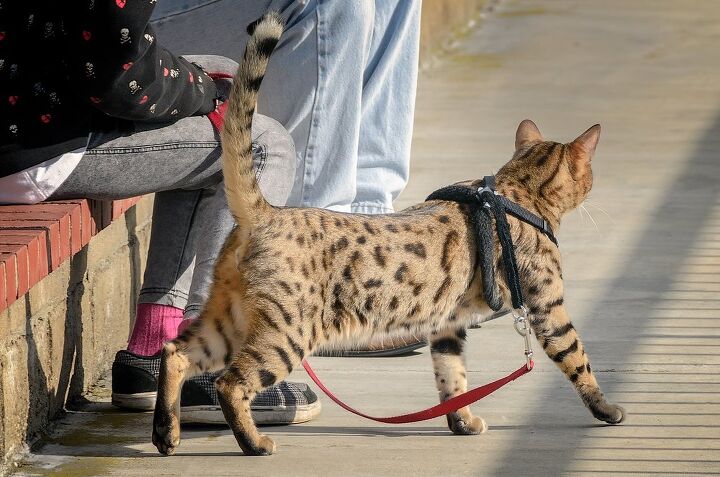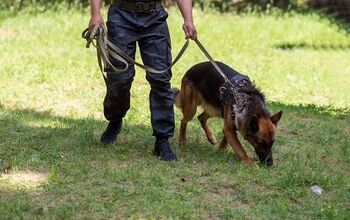Cheetoh


About Cheetoh
If you have thought about bringing a cat into your family but you are interested in searching for a breed that is stunning in appearance and stands out against other cat breeds that are more well-known, the Cheetoh might be a good fit.
The Cheetoh’s parent breeds are the Ocicat and the Bengal, which is actually a direct descendant of the wild Asian Leopard Cat. These two breeds were crossed in 2001 by a breeder named Carol Drymon. She was hoping to create a new feline that would display the physical characteristics of a wild cat and the gentleness of a housecat. The plan was successful, and the Cheetoh is roughly eight generations removed from wild cats.
Despite their good looks and great personality, however, Cheetohs are still rare compared to other breeds, particularly because this is a fairly new breed. It might be a little tough to locate one, but if you do, you might find yourself falling in love immediately. Just be sure you can handle these unique kitties, especially since they still have quite the wild side to show off.
The Cheetoh is a product of the Ocicat and the Bengal cats.
You can expect that a Cheetoh will be a fun-loving kitty who enjoys playing, running, and jumping through every room in your house. When they aren’t exercising and letting out their energy, though, these cats will calm down and be ready for some snuggles with their human family.
This means they may be a good choice if you don’t mind having a high-energy feline companion who will need a lot of attention and mental stimulation. Be prepared to set up your home with plenty of toys, cat trees, perches, etc. to help keep your Cheetoh occupied, and to provide loads of opportunities for exercise. Again, these cats can have a lot of energy, so giving them a chance to release it in a positive way is important.
These gentle and talkative felines can also be described as sweet, docile, social, and friendly, and they make wonderful family pets. So even though they might look wild, their personality is that of a domestic cat. They are even known for their love of people, their curiosity, and their strong bonds to their favorite humans. What a combination: the look of a wild cat with the personality of a domesticated feline!
Cheetohs do particularly well in families that are active and large. After all, the more people in a household, the easier it will be to give this breed all of the love and attention it craves, and it will also be easier to keep these active kitties busy. These cats should not be ignored, and they should be kept engaged so that they don’t become bored. You may want to consider getting more than one cat if you are going to introduce a Cheetoh into your family, as doing so could help prevent boredom and loneliness when you are too busy or when you aren’t home.
Also, if you are hoping to introduce a kitty into your family who will be easy to train, the Cheetoh will not disappoint, as this is one of the easiest feline breeds when it comes to training. These cats have even been described as behaving like dogs, and they are known for their high level of intelligence. You can, for example, teach your Cheetoh to walk on a leash or perform fun tricks. Doing so could even enhance your cat’s playtime, which is necessary to help this kitty burn off all of his energy.
Bottom line: because of the Cheetoh’s personality and needs, if you and your family lead a busy lifestyle, this breed might not be right for you. On the other hand, if you have plenty of time to devote to caring for your pet, the Cheetoh can be a lot of fun to have around, and can make a wonderful, loyal companion. You might be able to take this kitty on walks with you or you might decide that building a catio is the perfect way to let your feline friend safely spend some time outside, observing the local wildlife that might go walking or flying by.
For a housecat, the Cheetoh is a muscular and large breed. In fact, this is one of the largest breeds of all the domestic cats, with males being bigger than females. So, this is yet another thing to consider before you decide if you want to bring a Cheetoh home. Do you have the space for a kitty that’s larger and has a playful and active personality? Will your kitty have a space where they will be able to feel safe and secure if they ever need to retreat? And do you have room for the products (e.g. puzzle toys, cat trees and condos, etc.) that can help your Cheetoh get much-needed exercise?
At the same time, however, this kitty is elegant, and you can even recognize these unique felines by the way that they walk. They can be described as walking as though they were stalking prey while on the hunt, so they appear quite graceful, with a low gait that is the result of their hind legs being a bit longer than their front legs.
Also, the head of a Cheetoh can be described as forming an equilateral triangle with the ears and eyes, which are large as well. There is no denying that these cats are stunning!
The Cheetoh features a beautiful, soft coat that makes it look like a miniature cheetah. This cat’s fur could feature one of six different colors, and these include snow spotted, blue marbled, brown marbled, snow marbled, cinnamon spotted, silver spotted, and brown spotted. However, all of the colors will feature spots or rosettes, creating an attractive pattern across the coat.
In addition to being noteworthy in terms of appearance, the Cheetoh’s coat is also irresistible because it’s so plush and smooth. You might find that you always want to pet your Cheetoh!
Cheetohs, which are considered hypoallergenic, feature a velvety coat that is thick, shiny, and short. This plush coat will shed minimally, and it will only require a weekly brushing to help keep it clean and smooth. Brushing also helps remove loose hair, and it is a great opportunity to bond with your Cheetoh and give him the attention that he needs.
Overall, when it comes to grooming requirements, the Cheetoh is a low maintenance breed that doesn’t need a strict schedule of brushing. However, it is still a great idea to buy a brush or two (consider brushes and combs that are designed specifically for cats) so you can brush your Cheetoh’s coat on a regular basis. Your kitty is sure to absolutely love being pampered by you, and it is a perfect way to spend time with this cat that prefers to be around people. In fact, after a brushing session, your companion might want to hang around and cuddle with you to totally relax.
Photo credit: Korneevets-Vydrenkova/Shutterstock; livinsky Alex/Shutterstock; Lux Blue/Shutterstock

Lisa Selvaggio is a freelance writer and editor, and our resident cats-pert, with certifications in pet nutrition and pet first aid. She enjoys producing content that helps people understand animals better so they can give their pets a safe and happy home.
More by Lisa Selvaggio
























